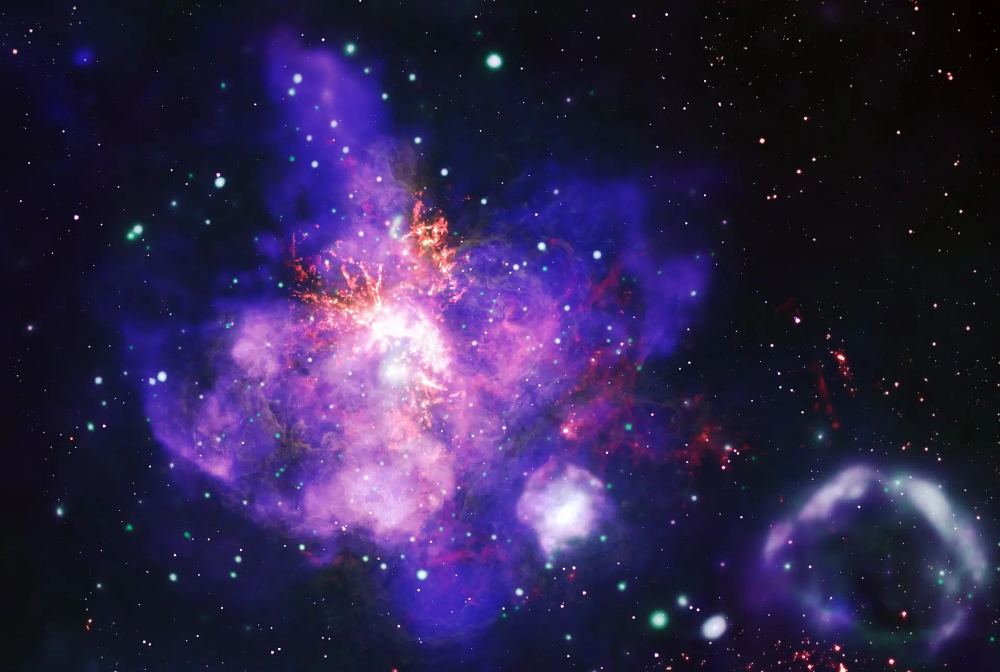
 Credit: X-ray: NASA/CXC/Penn State Univ./L. Townsley et al.; Infrared: NASA/JPL-CalTech/SST; Optical: NASA/STScI/HST; Radio: ESO/NAOJ/NRAO/ALMA; Image Processing: NASA/CXC/SAO/J. Schmidt, N. Wolk, K. Arcand
Credit: X-ray: NASA/CXC/Penn State Univ./L. Townsley et al.; Infrared: NASA/JPL-CalTech/SST; Optical: NASA/STScI/HST; Radio: ESO/NAOJ/NRAO/ALMA; Image Processing: NASA/CXC/SAO/J. Schmidt, N. Wolk, K. Arcand
Bouquet of the Tarantula
The Tarantula
Nebula (30 Doradus) in the Large Magellanic Cloud is the most active
region of star formation close to the Milky Way, containing enough raw materials to power 25 million years of star formation, and producing the most massive stars in the LMC. As such it provides a unique test case for understanding the still-mysterious process of stellar childbirth. Star formation involves the complex interplay between extremely cold and extremely hot matter, gravity, magnetic fields, solid dust, low-density gas, inflows, outflows, turbulent motions and large-scale rotation. Clues to how this all fits together can be derived by comparing high-energy X-ray image with images in the optical, infrared, and radio. The image above features the deepest high-resolution X-ray image of the Tarantula Nebula, obtained using 23 days of exposure with NASA's Chandra X-ray Observatory (in blue and green), along with with an optical image from NASA's Hubble Space Telescope (in yellow) and radio data from the Atacama Large Millimeter/submillimeter Array (in orange). This deep Chandra X-ray image allows astronomers to peer through the curtain of cold gas and dust which surrounds the stellar nursery, and reveals the bouquet of hot, diffuse gas produced as strong, fast stellar winds from newly-formed massive stars plow into gas and dust near the stars.
The brightest
individual source seen in the X-ray image is an extremely massive star known as Melnick 34, which contains more mass than 130 of our Suns. On the lower right of this image is a ring-like supernova remnant called N157B, representing the sad, sudden explosive death of a young, massive star.
Published: February 17, 2025
<
HEA Dictionary ● Archive
● Search HEAPOW
● Other Languages
● HEAPOW on Facebook
● Download all Images
● Education ● HEAD
>
Each week the HEASARC
brings you new, exciting and beautiful images from X-ray and Gamma ray
astronomy. Check back each week and be sure to check out the HEAPOW archive!
Page Author: Dr. Michael F. Corcoran
Last modified Monday, 24-Feb-2025 00:46:50 EST


